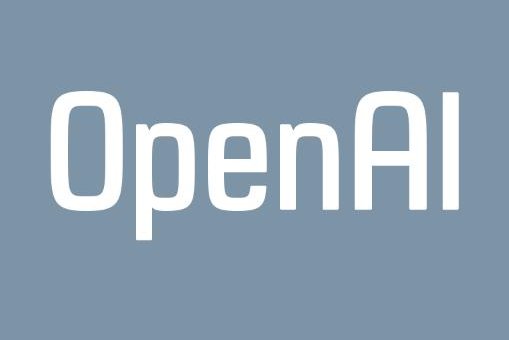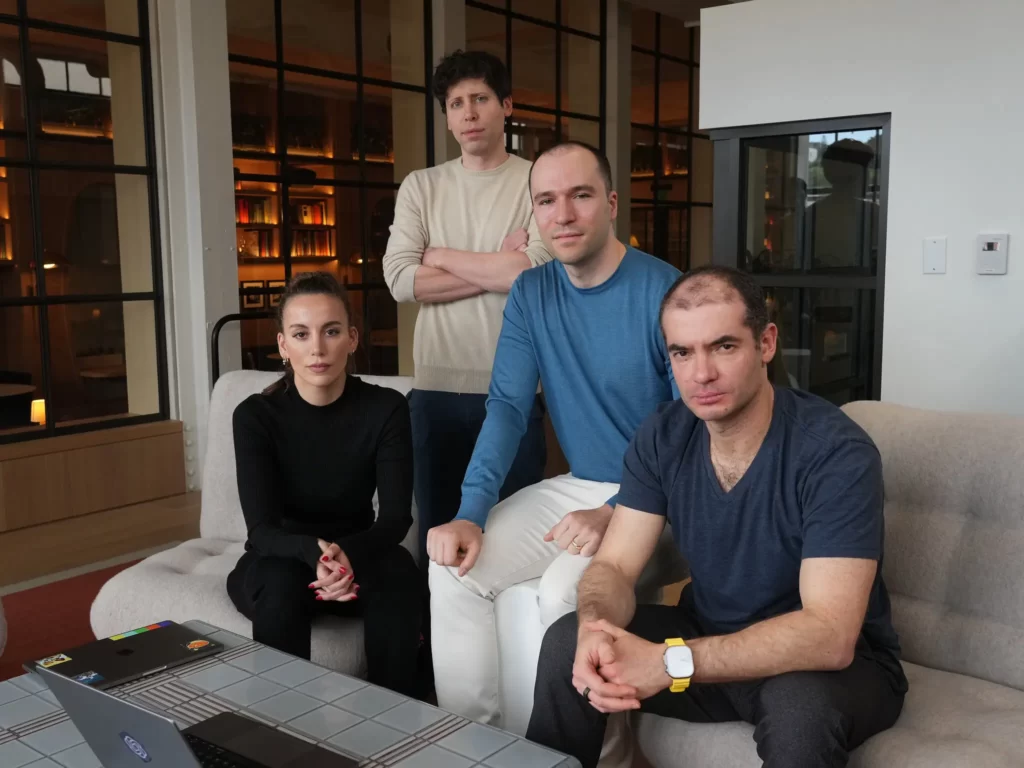On Monday (November 20th), Microsoft’s CEO, Satya Nadella, took to X to convey that Microsoft had hired OpenAI co-founders Sam Altman and Greg Brockman. Going forward, the duo will lead an “advanced AI research team”. To rewind back to the main event that occurred a few days prior, the media is still buzzing from OpenAI’s announcement on Friday (November 17th) that relayed that Sam Altman will be removed from his position as the CEO of the company and leave the board of directors.
This announcement blindsided the entire tech industry, as the 38-year-old CEO was the face of OpenAI and ChatGPT’s success. The company, which started in 2015 with the sole purpose of ensuring that artificial general intelligence benefits all of humanity, has gone through significant changes; yet its core mission has never wavered. Then what exactly led to the rift that caused this drastic decision? What led Altman and Brockman to Microsoft?
Where it all began
Formally established in 2015, OpenAI started off as a non-profit organisation focused on developing ‘safe and beneficial’ artificial general intelligence, or AGI. It defined AGI as “highly autonomous systems that outperform humans at most economically valuable work”. Right off the bat, the founding members pledged $1 billion to the venture; though the collected contribution was only $130 million until 2019.

OpenAI’s founding team consisted of Sam Altman, Greg Brockman, Reid Hoffman (co-founder, LinkedIn); Jessica Livingston (founding partner, Y Combinator); Peter Thiel, Amazon Web Services, Infosys, and Elon Musk. Musk was the organisation’s biggest donor, though he stepped down from the board in 2018; due to a potential conflict of interest with his role as CEO of Tesla.
Two years after its inception, OpenAI introduced the idea of Generative Pre-Trained Transformers (GPTs). The machine learning model was trained on inputs, such as large data sets, to produce outputs like the answers to users’ questions, almost like a human brain. To build on this idea, the organisation needed investments; this led to the foundation of OpenAI’s for-profit subsidiary, OpenAI Global LLC. Spearheaded by Altman, the organisation got $1 billion in funding from Microsoft.
In late 2022, OpenAI received widespread media coverage when it released a free preview of ChatGPT, an AI chatbot based on GPT-3.5. This was a huge success, and more than a million people signed up for the preview. Altman’s name became synonymous with ChatGPT’s success, and the tech world’s interest in OpenAI grew to new bounds.
Two sides to every coin
The success was not smooth sailing. Amongst the news of funding that would value the company at $29 billion, tensions were high among the top executives at OpenAI. OpenAI chief scientist, Ilya Sutskever, was one of the first to show increasing worries about the potential harmful effects the company’s high technology could have on society if not kept in check. According to a media report, Altman was going too fast with a single-minded focus to build the company and not paying enough attention to these nuances.
In fact, this concern points to an ever-present divide in the tech industry and beyond. On one side, there are people who believe that if left unchecked, AI poses a dangerous threat to society; it should be developed under careful regulations and considerations. On the other hand, there are people who believe in the potential of AI for world-changing progress; they insist that this is only possible if the fear surrounding artificial intelligence is removed.
OpenAI’s board of directors was leaning more towards the first side and was concerned about Altman’s fast trajectory without sufficient concern for the safety implications of such a revolutionary technology. Though these were clearly not their only concerns, there was more to the matter that resulted in the final decision.
Altman ousted from his company
Akin to the 1985 departure of Steve Jobs from Apple, Sam Altman too was fired from his position as CEO of OpenAI and removed from the board of directors. This decision was reportedly sparked by an investigation that claimed that Altman was “not consistently candid in his communications“; as a result of which “the board no longer has confidence in his ability to continue leading OpenAI”. This statement proved that Altman’s actions ware in disagreement with the collective requirements of the board.
Announced through the OpenAI blog, Altman’s departure was followed by a deliberative review process by the board; which consists of OpenAI chief scientist Ilya Sutskever, independent directors Quora CEO Adam D’Angelo, technology entrepreneur Tasha McCauley, and Georgetown Centre for Security and Emerging Technology’s Helen Toner.

Sam Altman was made privy to this decision on a video call with the board of directors. Unexpectedly, Greg Brockman wasn’t part of the discussion that led to the decision to remove Altman despite being the president. Soon after Altman’s announcement, Brockman was informed that he was being removed from the board but could stay in his role in the company. Yet, soon after, Brockman announced that he had quit.
An unexpectedly hit to the investors
In the official statement, the board of directors said: “OpenAI was deliberately structured to advance our mission: to ensure that artificial general intelligence benefits all of humanity. The board remains fully committed to serving this mission. We are grateful for Sam’s many contributions to the founding and growth of OpenAI. At the same time, we believe new leadership is necessary as we move forward. As the leader of the company’s research, product, and safety functions, Mira is exceptionally qualified to step into the role of interim CEO. We have the utmost confidence in her ability to lead OpenAI during this transition period.”
Along with Altman’s removal, OpenAI’s leadership team appointed Mira Murati, the company’s chief technology officer, as interim CEO. Murati has been part of the leadership team for five years and has played a significant role in enhancing the company’s research, products, and operations.
One of the hardest hits of the decision came to OpenAI’s top investors, including Microsoft, Thrive Capital, and Sequoia Capital. Microsoft was completely blindsided by this announcement and only found out minutes before it was announced. The other investors became privy through social media. Microsoft’s investment in OpenAI has only grown through the years. In fact, Altman is credited with compelling Microsoft CEO Satya Nadella to commit $10 billion to the company. Currently, Microsoft’s cumulative investment in OpenAI is reportedly $13 billion.
With the heavy investment comes a mutually beneficial collaboration. Microsoft’s initial investment allowed OpenAI’s software to run on a Microsoft Azure-based supercomputing platform. In turn, Microsoft has used many aspects of OpenAI to improve its products, such as Bing Chat or Windows Copilot. Following the abrupt news, OpenAI’s investors were in talks to reinstate Altman.
Read more on Microsoft: The Odyssey of Bill Gates: On the way to building the Tech behemoth
Negotiations fall through: road to new beginnings
Amidst speculations, Sam Altman and Greg Brockman returned to OpenAI’s headquarters in San Francisco for a possible negotiation and return to position. Interim CEO Mira Murati carried out the discussions. According to a report by Reuters, she relayed that she invited the former executives. Altman took to X to further prove the speculations. Wearing a guest badge in the OpenAI headquarters, he wrote, “First and last time I ever wear one of these”.
The negotiations evidently fell short as OpenAI released another statement restating its decision to remove Altman from his role. Moreover, they named Emmett Shear, a former executive at Twitch, as the new interim chief executive, pushing aside Murati. The board said Mr. Shear has a “unique mix of skills, expertise, and relationships that will drive OpenAI forward,” according to the memo viewed by The New York Times.
“The board firmly stands by its decision as the only path to advance and defend the mission of OpenAI,” said the memo signed by the company’s four directors, referring to Mr. Altman’s ouster on Friday.
Clearly, from the investors’ support, this was not the end for Altman and Brockman. Just hours after OpenAI’s latest announcement, Microsoft’s CEO Satya Nadella took to X and announced that Altman and Brockman had joined the company to lead an “advanced AI research team”.
Following the news, more than 700 of OpenAI’s employees signed an open letter asking the board to resign. The letter accused the board of being “incapable of overseeing OpenAI”. The letter questioned the board’s competence and added, “We are unable to work for or with people that lack competence, judgement, and care for our mission and employees.” The signatories said they may resign and go to work for Altman and a newly formed subsidiary of Microsoft.

